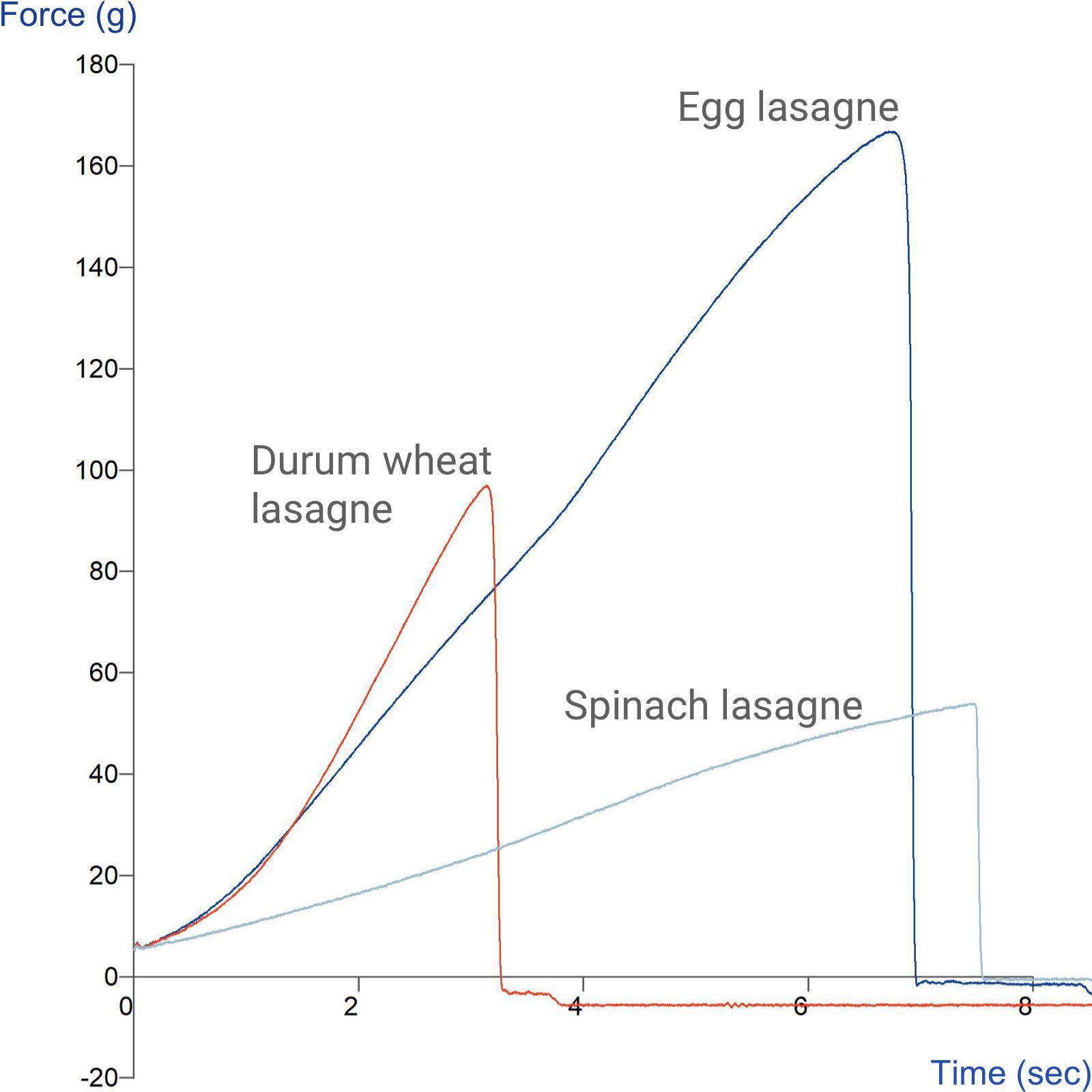Product overview
Guidelines for pasta cooking times are typically trialled extensively to ensure that consumers can produce ideal results at home. In an age of increasing culinary sophistication and a more discerning consumer, finding a precise solution for creating the preferred ‘al dente’ pasta is of paramount importance. The Noodle/Pasta Loop Cutter and Adapters provides such a solution and aids manufacturers in testing the resilience and consumer appeal of cooked sheet pasta and noodles to perfect the formulation of their products with the aid of repeatable, scientific analysis. This Community Registered Design is an important advancement in gauging product quality and enhancing customer satisfaction which, in turn, leads to maximising repeat purchase.
The Spaghetti/Noodle Tensile Rig is suitable for samples that have already been cut and prepared for the consumer. In the case of noodles or pasta ribbons, the dough sheet will have been cut to specific ribbon width and length. Whilst testing of this sample is possible on the Spaghetti/Noodle Tensile Rig, the test setup is simplified if the sample is available in sheet form and cut into a circular piece for ease of mounting on the rig.
The Noodle/Pasta Loop Cutter and Adapters comprises of a unique annular sample cutter, hand press and sample mounting washers that fit to the Spaghetti/Noodle Tensile Rig (A/SPR supplied separately). This attachment adapts the Spaghetti/Noodle Tensile Rig for use with sheet dough samples. The unique cutter produces an annular sample shape that has been designed to promote failure away from the sample mounting points. Failure within the gauge length of the sample is imperative to ensure good quality test data. Prior to testing, samples are mounted to a separating rod attachment on washers that are specifically designed to prevent the noodles from breaking at the point of attachment. Vertical movement of the upper rod is applied until the pasta breaks during which the Texture Analyser measures the force and distance required to stretch the samples to breaking point, providing an accurate measure of their tensile strength and extensibility. These are important properties for assessing the quality of ingredients and the effect of formulation and additionally how dough may withstand further processing during manufacture.
How does the Noodle/Pasta Loop Cutter and Adapters work?
Ideal sample form
Solid extensible materials which exist in the form of a loop.
Technical information
Installation
Full installation instructions are provided within the Education Zone of the latest Exponent/Connect software version and on the technical information sheet accompanying this product.
Chemical compatibility
Stable Micro Systems probes and attachments are commonly made from four materials: anodised aluminium (AA6082 T6), stainless steel (316 T), Delrin (acetyl copolymer) and Perspex (polycarbonate).
In general use, probes and attachments made from these materials will be suitable for testing food products and inert non-food materials.
The four materials listed above are not universally resistant to all types of chemicals and as such the compatibility of the probe/attachment material with the product (to be tested) must be established to prevent damage to the probes and attachments. If the compatibility of the product with the probe is unknown to the customer then the chemical information about the product (Material Safety Data Sheet or Product Data Sheet) should be submitted to Stable Micro Systems. Stable Micro Systems will then assess the suitability of the probe/attachment material for use with the product and advise accordingly. If this advice is not sought then Stable Micro Systems will not accept liability for probes/attachments damaged by chemical attack from the product being tested.
Cleaning and maintenance
All probes and attachments may be cleaned in warm (or hand hot) water using a mild detergent. A soft brush may be used but abrasive cleaning aids should be avoided. Stable Micro Systems products should not be microwaved or cleaned in a dishwasher.
Screw threads should be lightly lubricated after drying using a light lubricant, e.g. petroleum jelly, mineral oil. This will aid the fitting and unscrewing of the item. Each component of a probe or attachment should be wrapped separately when stored, to avoid scratching or chipping. This will safeguard against any unnecessary damage to the accessory.



